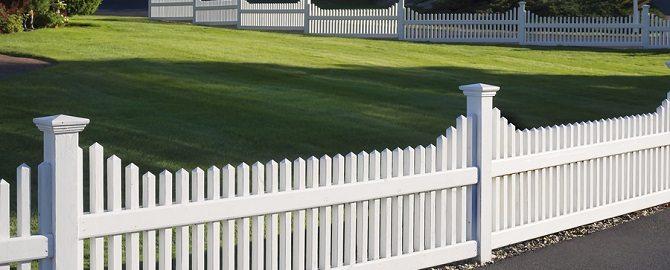Spring is right around the corner, and the cold days of winter will soon be gone.
Before the plants come into bloom, and lawn and landscape maintenance become a priority, now is the best time to inspect fencing and start taking care of any fence repair issues that may be necessary.
Fences do not usually need much in the way of upkeep, but some fence maintenance is required to keep these enclosures in good condition.
By devising a checklist now, actually getting fence repair done before summer begins, leaves more time to enjoy the warm weather - without having to spend it on more yard work.
Perform A Thorough Fence Inspection
Once the weather breaks, the best way to tackle any fence maintenance issues is to do a thorough inspection by walking the entire fence line looking for problems.
Check every post to make sure it is solid in the ground, and does not feel like it is loosening.
A loose fence post likely indicates it is broken or rotting, or the post has stretched the hole and is no longer providing a strong support.
Be sure to also check all rails, boards, or pickets, and ensure they are still affixed tightly, and that none are split or have nail heads beginning to rise up.
Carrying a hammer while doing the inspection is a great way to pound in loose nail heads right away with no other attention necessary.
Mark any posts or rails that need additional attention so they are easy to find for making fence repairs.
Make Necessary Fencing Repairs
Once the fence line has been completely inspected and marked for repair, then it is time to get out the tool box and start actually making those repairs.
First replace any split boards or broken pickets, where there is no post involvement.
Repairing posts may be a little more work-intensive or require the help of a fence company, yet this is the time to do it since the sections that attach to that post cannot be finished until the post is repaired.
Once all posts, rails, boards, and pickets are repaired and firmly attached, it is possible to move on to the next step.
Clean Fences and Along Fence Lines
Once repairs have been made, it is a good time to clean along the fence line to remove any collected leaves and branches, or other debris, and then clean the fence itself.
Clean the enclosure based on what type of material it is. PVC can be easily cleaned with a hose and a soft brush, and then rinsed off.
Wooden fences may require a bit more cleaning power, such as a biodegradable soap that will not harm grass, and a stiffer brush, especially if there is caked on dirt, mold, or even road salt.
Paint, Stain or Seal if Necessary
Once fences have been cleaned, any wooden fences should be sealed, re-stained, or re-painted if this has not been done for a few years.
Not only will this make a fence look practically brand new, but it will preserve the fence - helping it to last longer.
At The End of The Day
With these great tips, planning spring fence maintenance should be an easy task for homeowners, leaving plenty of time for other warm weather projects.
Fence repair and maintenance, when done as needed, keeps fences in great shape, preventing little issues from becoming bigger, more costly ones!
Thinking About Fence Repair In Bryan?
College Station Fencing Offers All Types Of Fencing Services!
Call 979-553-6447!
Additional Articles:
It's Warm, It's Welcoming - It's Wood Fences!
The Useful Benefits of Beautiful Wrought Iron Fences!
Discover Great Front Yard Fencing Designs!
Best Things to Know When Installing A Fence!
Fencing - Inspection, Maintenance and Repair!






